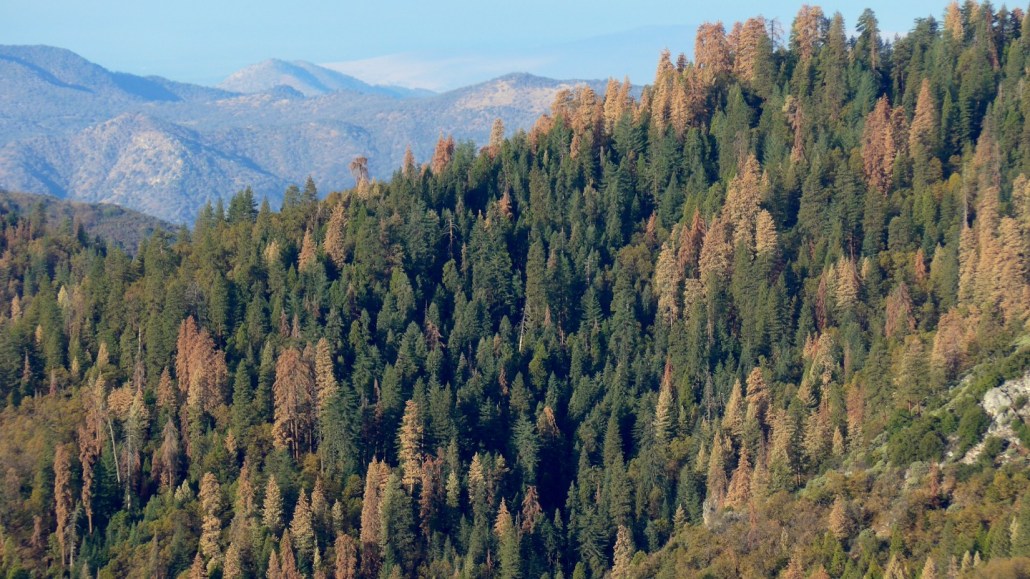Surviving a drought may help forests weather future dry spells
After a drought, California’s forests withstood a second one surprisingly well

Conifer forests in California hurt by a severe drought in the late ’90s and early 2000s weathered a second severe dry spell about a decade later better than forests that hadn’t experienced the earlier drought, a new study finds.
Nate Stephenson/USGS
- More than 2 years ago
Some forests take one-two punches surprisingly well.
Researchers have shown that certain California forests exposed to two successive droughts weathered the second one much better than forests only hit by the later dry period. Given that the frequency and severity of droughts is increasing with climate change (SN: 3/10/22), the findings suggest that forested regions might fare better than predicted in the future, the research team proposes in the May 17 AGU Advances. That’s important because of the many resources that forests provide, including their ability to sequester about a quarter of the carbon dioxide that humans put into the atmosphere every year.
Carl Norlen and Mike Goulden, ecologists at the University of California, Irvine, studied roughly 520,000 hectares of California forest (about 4 percent of the state’s forested areas). The researchers focused on conifers, trees such as pines and firs that have needles rather than flat leaves. Using archival data gleaned from airplane observations, Norlen and Goulden estimated the extent of conifer die-off during two droughts that struck from 1999–2002 and 2012–2015. “Both of them when they happened were considered some of the most severe droughts ever in California,” Norlen says.
When the researchers looked at forests that just experienced the 2012–2015 drought, they found that over 50 percent of forested areas showed evidence of die-off. But when Norlen and Goulden analyzed forests that had weathered both droughts, they were surprised to find that only 13 percent of those forested areas showed evidence of die-off after the second drought. The researchers also analyzed satellite data that revealed the severity of tree die-off, and they again found that forests hurt by one drought were better prepared to weather another.
The underlying cause of those differences probably has to do with the tree mortality that occurred during the first drought, Norlen and Goulden propose. Roughly 31 percent of the forested areas that experienced both droughts showed signs of die-off during the 1999–2002 drought. “We think that it has to do with experiencing die-off the first time,” Norlen says.
That makes sense, says William Anderegg, an ecologist at the University of Utah in Salt Lake City who was not involved in the research. “You might have culled out the weak trees,” he says.
Norlen and Goulden speculate that the first drought eliminated trees weakened by pests like bark beetles (SN: 2/21/23), or perhaps that the dry conditions prompted trees to protect themselves by growing deeper roots. Those changes would have helped protect the remaining trees from future droughts, Goulden says. “You effectively have a stronger population.”
Getting at the root of why exactly some forests are better prepared to weather successive droughts will require more investigation, the researchers say. One way forward is to monitor individual trees to better understand their physiology, which other teams have done by outfitting trees with sensors (SN: 4/25/23).
However, the new findings already provide some hope for the forests of the future. Modeling work has suggested that upwards of 50 percent of present-day conifer tree coverage could be lost in the Northern Hemisphere by the end of the century. But this new work shows that that prediction might well turn out to be an overestimate. “There’s an element of it that’s actually hopeful,” Goulden says.







